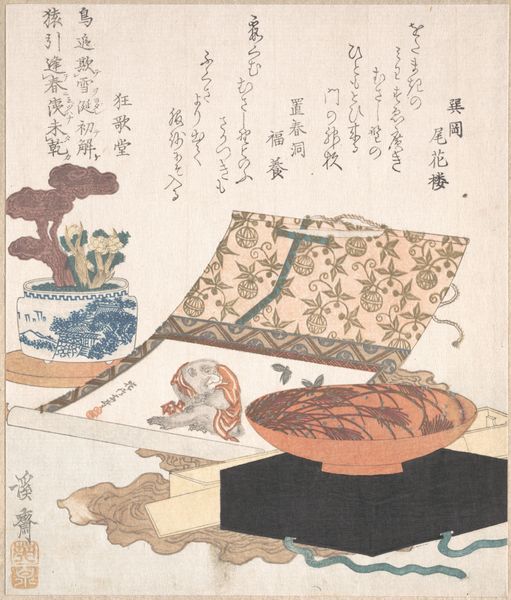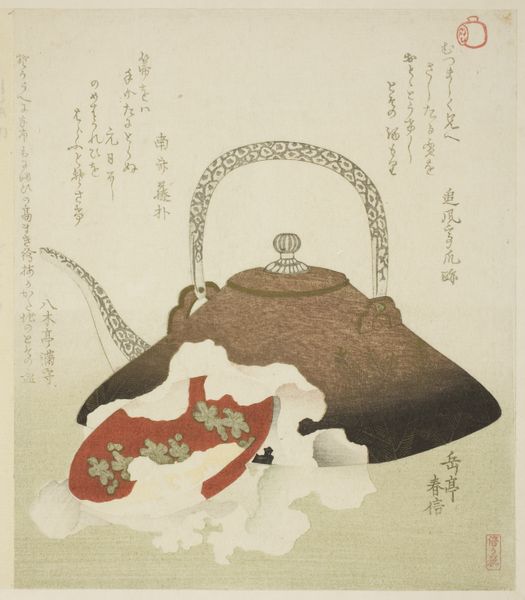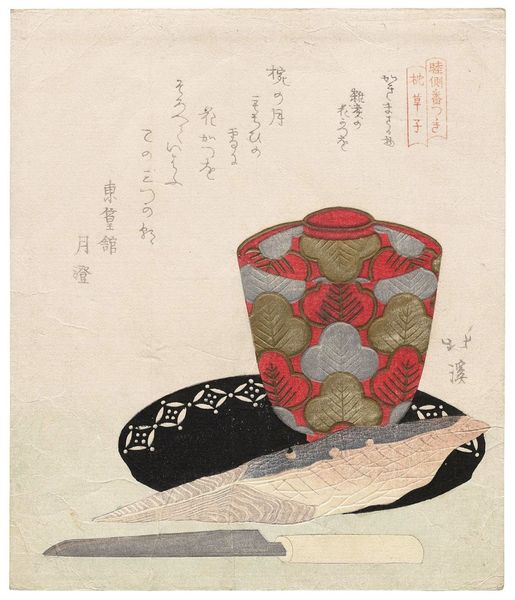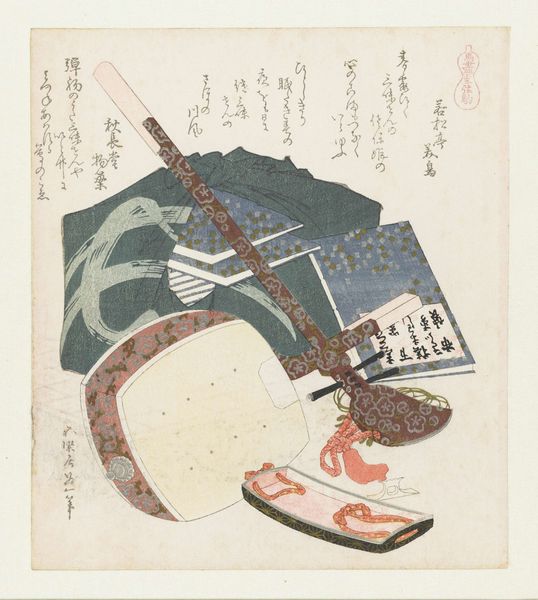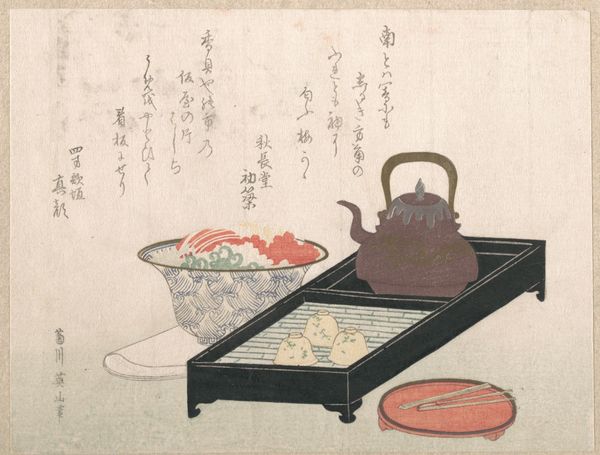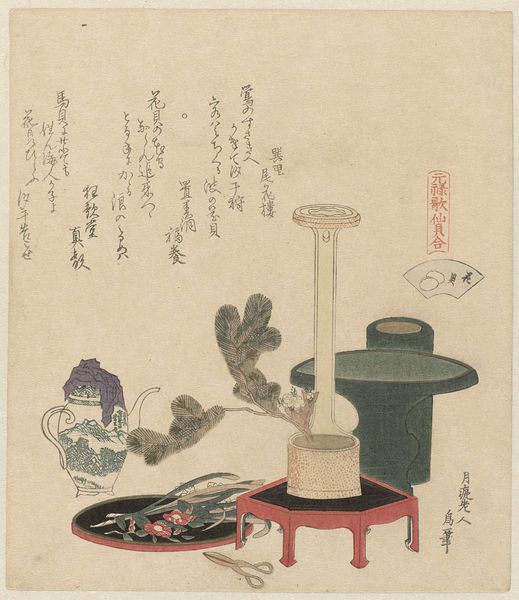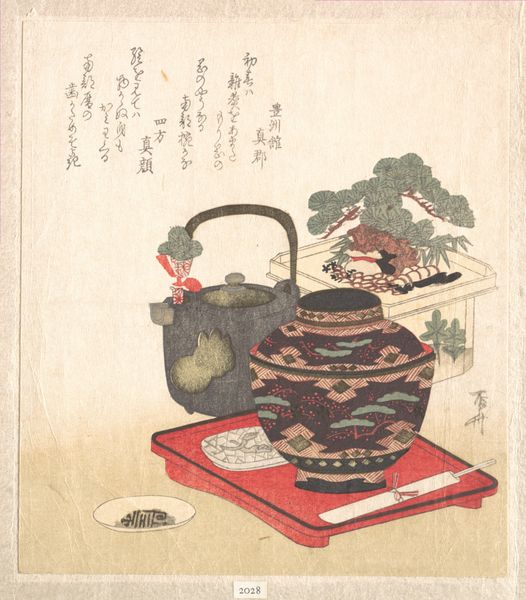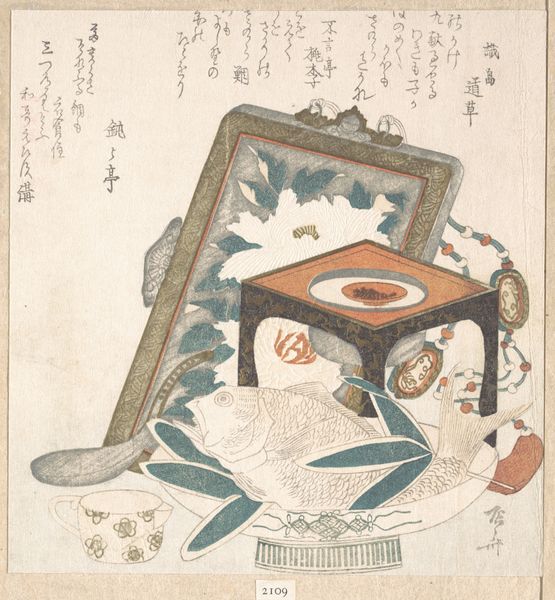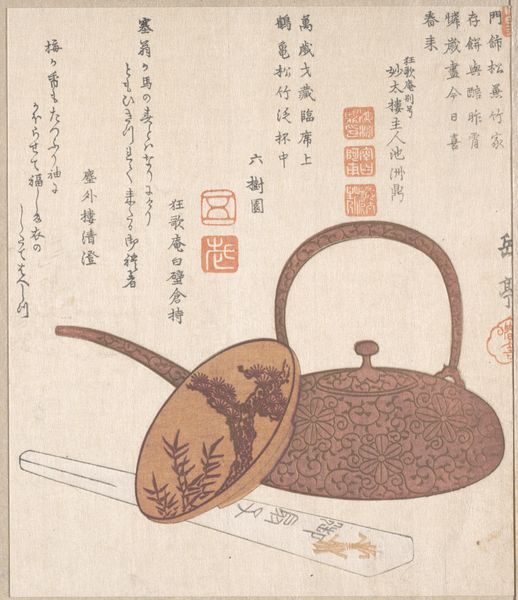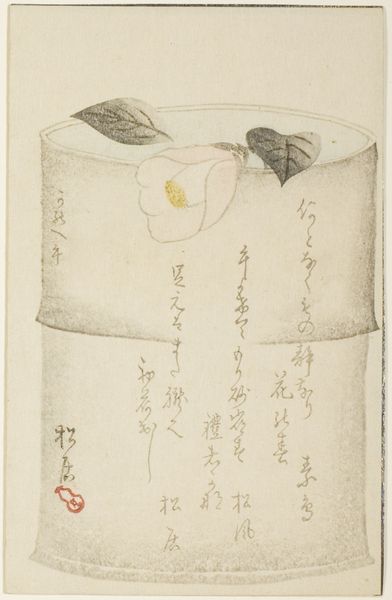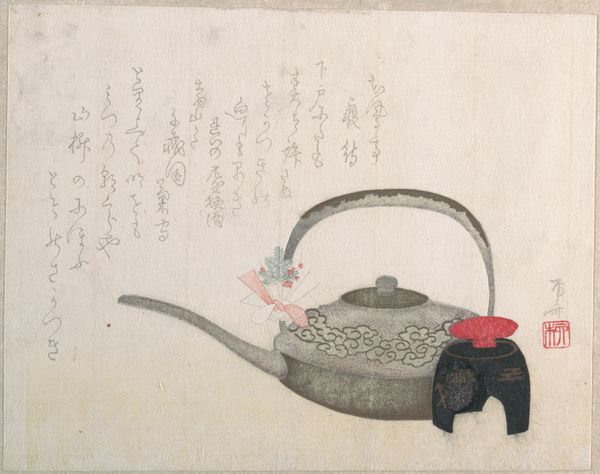
print, paper, ink, woodblock-print
#
blue ink drawing
# print
#
asian-art
#
ukiyo-e
#
paper
#
ink
#
woodblock-print
#
watercolour illustration
#
watercolor
Dimensions: height 206 mm, width 183 mm
Copyright: Rijks Museum: Open Domain
Curator: Hokusai's "Keramiek uit Sôma", dating from 1822, presents us with a captivating woodblock print—a still life, really—executed in ink and color on paper. Editor: My first impression is one of quiet intimacy. The muted tones and delicate lines create a sense of peaceful contemplation. It’s domestic, but also... reserved. Curator: I find it interesting how Hokusai has elevated these everyday ceramic items into something worthy of artistic representation. Consider the process, Editor. The carving of the woodblocks, the layering of ink, the production of multiples for wider distribution, all challenge Western notions of artistic production being solitary. Editor: Absolutely. It forces us to reconsider hierarchies of value and artistry. Who were the artisans involved in producing these functional wares, and how did their labour intersect with Hokusai’s role as an artist? Furthermore, the Ukiyo-e tradition, within which this work sits, often served a propagandistic purpose reflecting gender and class inequalities that need be acknowledged to fully appreciate the artwork. Curator: The stark contrasts in colour – from the earthy pot to the delicate blue on the tea container – highlights their individual qualities as much as their collective utility. The very act of depicting these manufactured objects connects the world of artistic expression with that of labour and consumption. Editor: Right. And it's not just about seeing pretty teacups. It invites us to consider how class and access shape our interaction with utilitarian things of beauty, like the bowls, kettles, and pots from that era. In what ways were gender roles implicated in preparing and presenting these sorts of materials to guests? Curator: And thinking about the audience, the print's relative accessibility through the printmaking process democratised access to images which could otherwise only be commissioned by a certain class. Editor: So this modest tableau resonates with wider implications about identity, societal power, and artistic practices that move between classes and genders, all reflected in the choices about representation of objects from one region’s factories and workshops. Curator: Indeed. Hokusai's still life transcends the mere representation of objects; it gives form to networks of commerce, production, and culture. Editor: For me, considering the social implications in conjunction with the piece allows the quiet image to begin speaking more eloquently to what Hokusai may have been striving for with “Keramiek uit Sôma”.
Comments
No comments
Be the first to comment and join the conversation on the ultimate creative platform.
